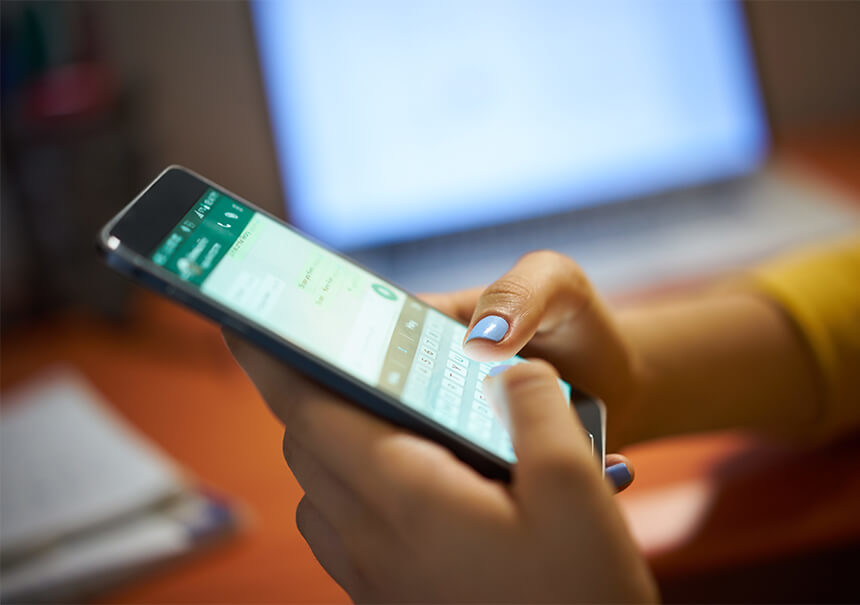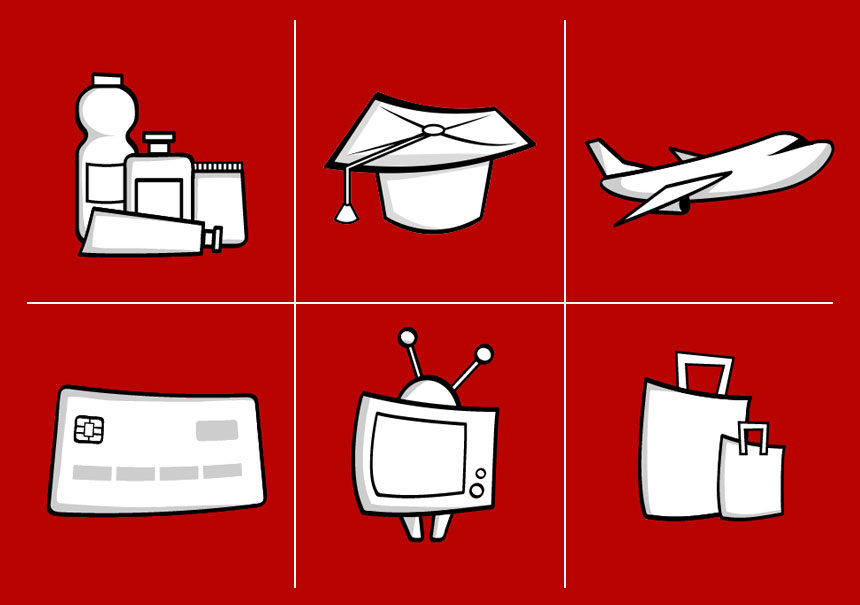SMS vs. WhatsApp – similar but different

Communicating with your customers and users via mobile devices entails many benefits. However, before you do, you need to pick the best tool to do so. There are two typically-mobile channels – text messages (also known as SMS messages) and WhatsApp. Which tool should you choose and for what? That’s what we want to discuss today.
In fact, SMS and WhatsApp have a lot in common. Both these channels are based on sending relatively short messages straight to the smartphones of your customers or service users. But as you will shortly see, there are some major differences between them.
We’ve made a list of seven areas in which some differences between text messages and WhatsApp messages become clearly visible. Let’s have a look at them:
Differences between SMS vs. WhatsApp
DIRECTION (IN AUTOMATION)
When it comes to text messages, sending automated texts is a one-way communication. That’s because such messages are usually sent from numbers your users can’t normally reply to. So you should opt for SMS when you have just a short message to convey without the need to engage in conversation (e.g., parcel tracking code).
On the other hand, since WhatsApp is a fully-fledged messenger, it provides users with two-way communication. That said, whatever you send via WhatsApp, your users will have the opportunity to reply. This makes communication more personal and engaging.
PERFORMANCE MEASUREMENT
With text messages, measurement options are limited. Our platform offers SMS reports containing information about the following:
- The number of messages sent
- The number of messages delivered
- The number of links clicked
With WhatsApp, measurement options are slightly more extensive. You can see how many messages have been sent, delivered, opened, answered, and canceled, so you get a more comprehensive view of your campaign’s performance.
PERSONALIZATION
Text messages offer limited personalization options, and they are based on available parameters in your customer database. So, for example, you can add the recipient’s first name in the message or use a given person’s date of birth to send them a personalized birthday message. With WhatsApp, you can do more and create conversation scenarios that adjust to the answers your customers send. Just like in this example:
PRICE OF EACH MESSAGE
In general, text messages are more expensive than WhatsApp messages as they entail additional costs on the mobile operator’s side. With WhatsApp, everything is Internet-based, so the cost of each message sent is limited only to the amount of data it uses.
MESSAGE LENGTH
Not that long ago, SMS messages needed to be really short, as they technically offer only up to 160 characters (or up to 70 if the message contains one or more Unicode characters, e.g., emojis). Today, this limit is extended, and long text messages can be sent as one (or converted to MMS). With WhatsApp, there are no such limitations, as each message has a maximum limit of 65,536 characters.
RICH CONTENT
Generally speaking, SMS messages are limited to text and Unicode characters. Sure, with smartphones, they can carry links and images (MMS), but this communication tool was intended specifically for textual content.
With WhatsApp, you are more flexible. Through this messenger, you can send texts, images, links, animations, videos, and voice messages. Furthermore, you can send interactive messages with buttons and lists. So, if it’s rich content you’re after, WhatsApp is your best bet.
CTR
Depending on the source, CTR (click-through rate) for text messages varies between 6% and 36%. When it comes to WhatsApp, different sources indicate a CTR of 30-60%. While every result mentioned in this section is good, WhatsApp is probably more engaging than standard SMS messages, which makes messages sent this way more clickable.
Similarities between SMS and WhatsApp
Everything we mentioned above is just half the story. The truth is both these channels have a lot in common! For instance, no matter whether you communicate with your users using WhatsApp or SMS, you need to stick to high privacy standards (primarily imposed by GDPR).
In both channels, both open rate and deliverability are very high and exceed 90%. Both channels are intended for short, concise messages, and both are about triggering one simple action (e.g., clicking a link or using a discount code).
That said, when should you use both channels?
WhatsApp and SMS – use cases
You should use this platform when you:
- Want to start a conversation (e.g., ask a question)
- Share rich content
- Accurately measure performance
- Introduce personalized communication scenarios
- Offer communication with a chatbot
- Need to communicate with customers all over the world
SMS
This tool is your best bet when you:
- Want to send simple messages that don’t trigger communication (e.g., welcome message)
- Need to send technical notifications and authorizations (e.g., one-time codes for your platform)
- Don’t know if your customers use WhatsApp (still not everyone uses this messenger)
- Don’t need to use rich content
- Communicate with people in the same country (international text messages are expensive)
- Send internal messages to your team
Wrapping up
Is either of these platforms better? Not necessarily; they just serve a bit different purpose. In order to maintain full flexibility and safety of your communication, you should keep both of these tools in your marketing stack. And thanks to iPresso, you can!
Our platform supports both text messages and WhatsApp messages (including integration with other tools). And if you haven’t been using WhatsApp in your marketing so far, we encourage you to give this platform a shot. Start with our recent blog post devoted to WhatsApp communication.
Do you want to learn more about the possibilities of iPresso integration with WhatsApp? Fill out this form and schedule a video call with our team!



